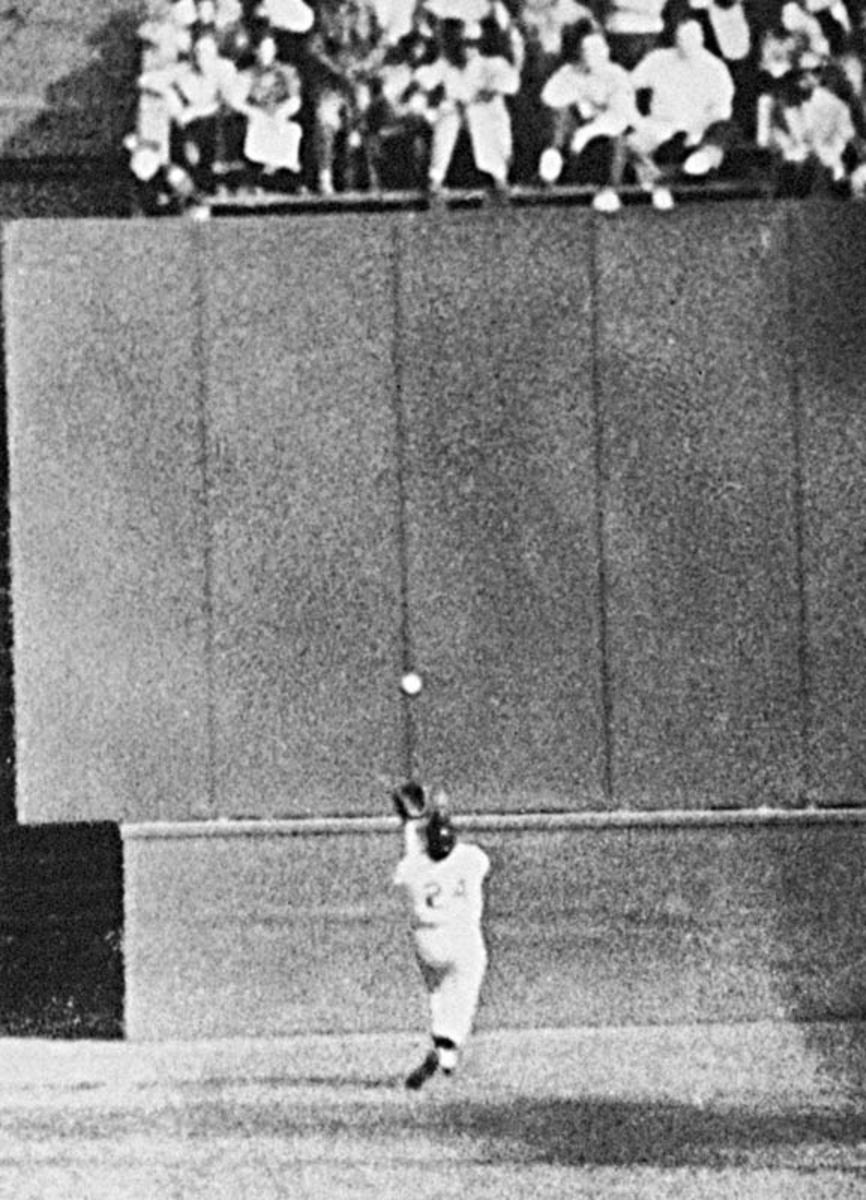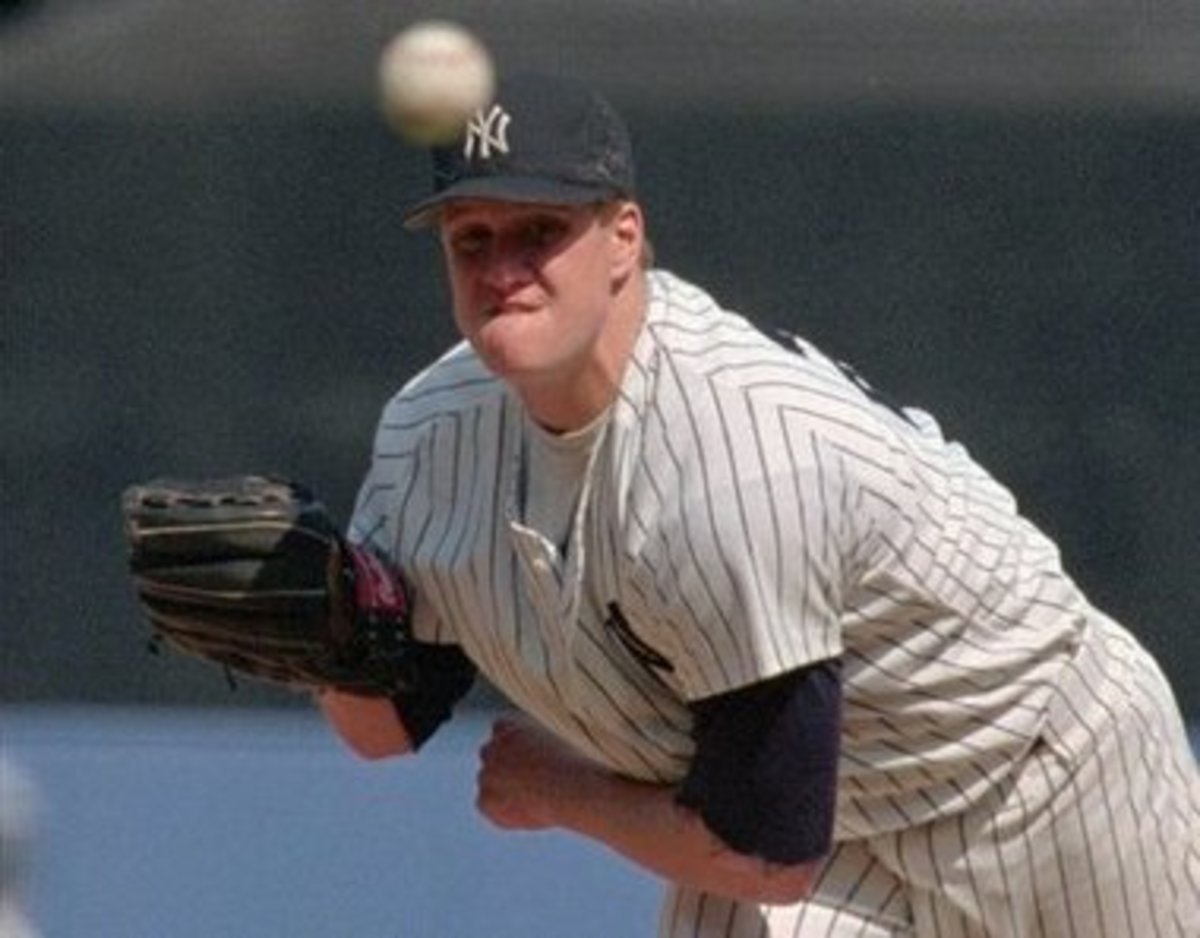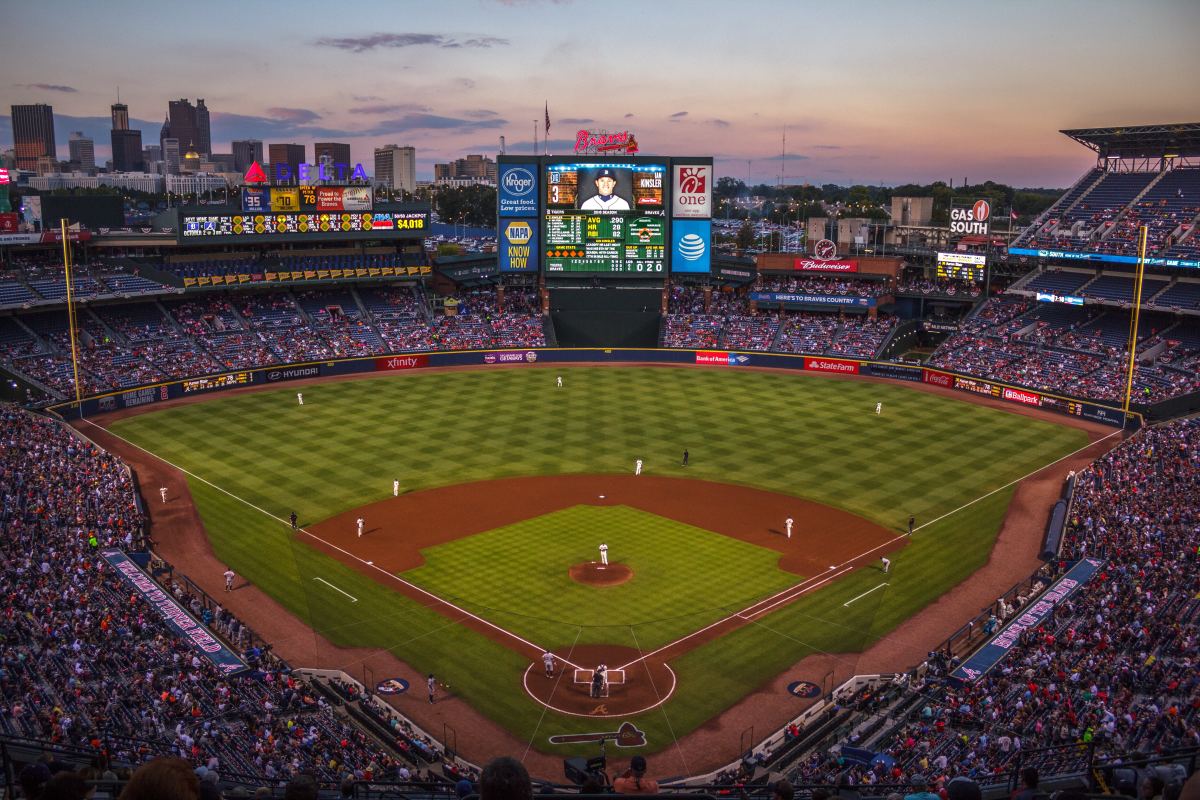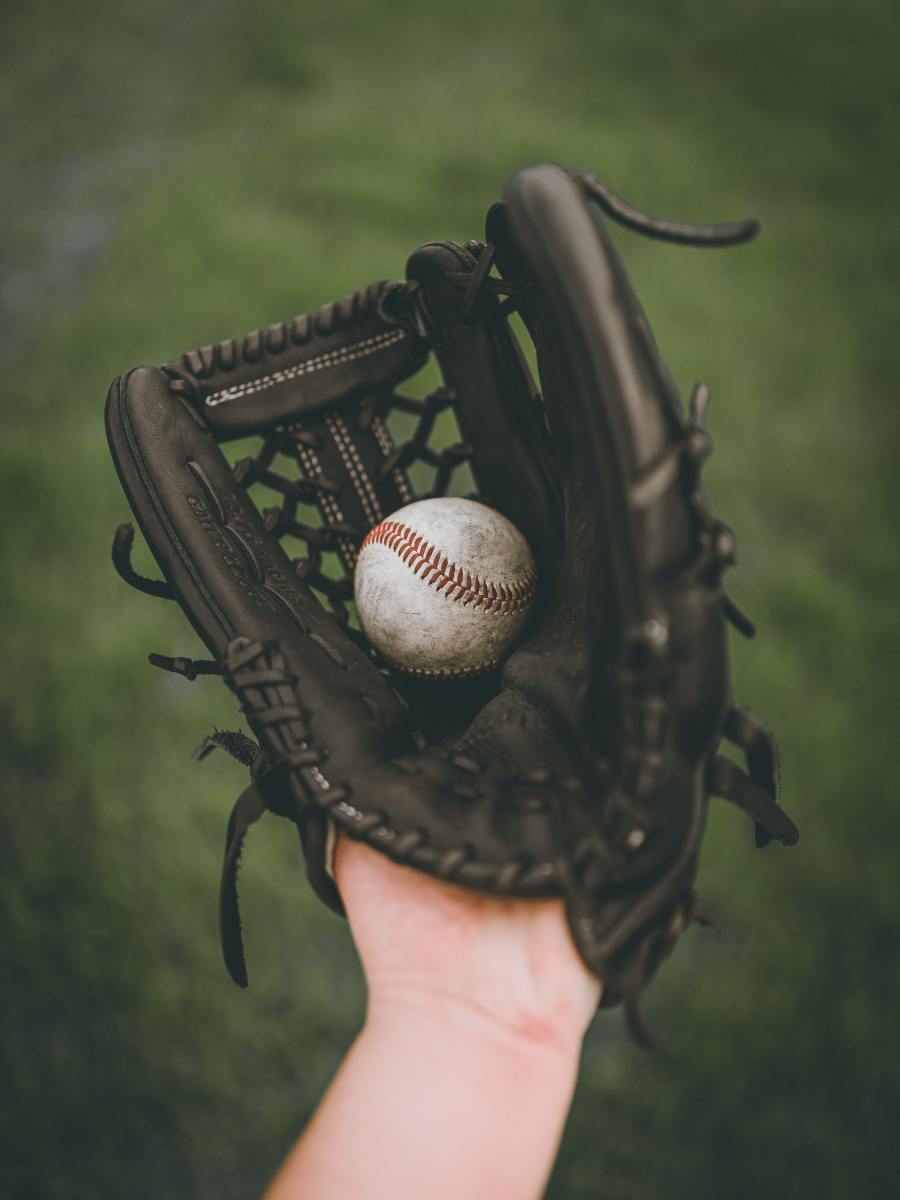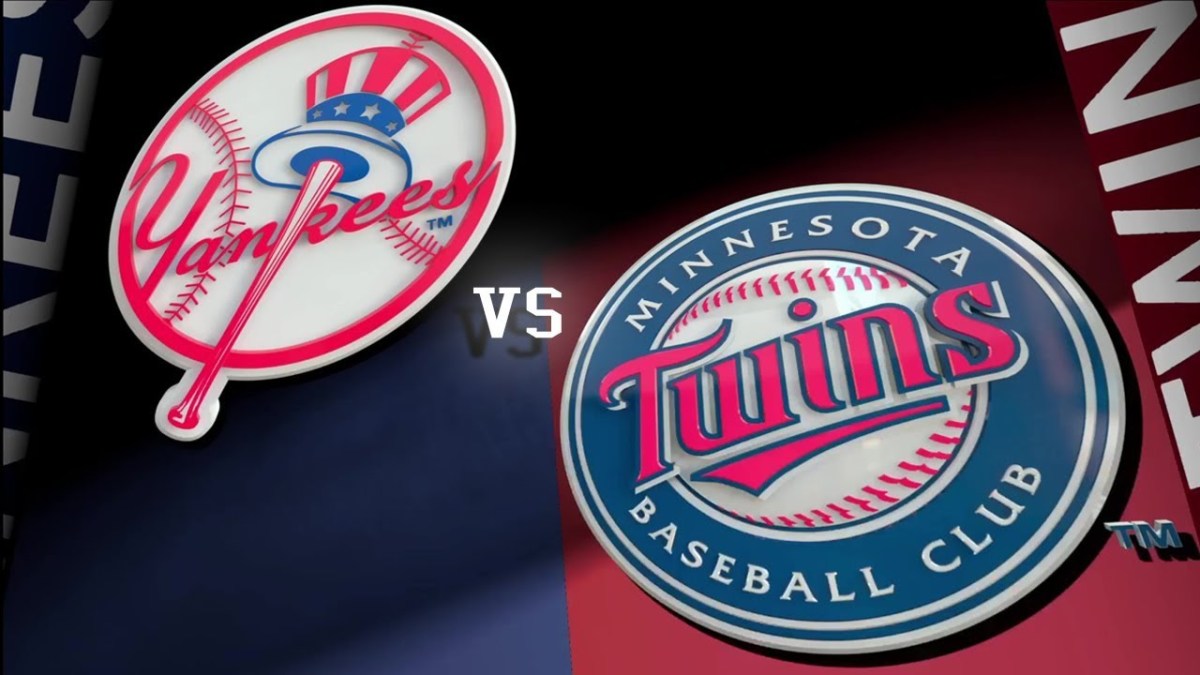The Mick and me: A fun visit to the Louisville Slugger factory and museum

The other day I took a batting stance with one of Mickey Mantle’s bats in my hands, one he used to club at least a few of his 536 home runs. It was a pretty good feeling.
I was visiting the Louisville Slugger Museum and factory in, of course, Louisville, Ky. If you ever get a chance to go, don’t hesitate. It includes a tour of the actual factory where they make bats for the major leagues, minor leagues and for public consumption. While we were there, the factory was producing bats for use by the Dodgers in Spring Training.
The museum is also a wonderful place to visit. Among other things, they have game-used bats from a handful of stars, including the one Mantle used that I posed with (I also held a Derek Jeter bat). And they have many other historic bats on display.
The mystique of Louisville Slugger
Growing up, Louisville Slugger had an almost magical connotation to me. The vast majority of major leaguers at the time used Louisville Slugger. My dad bought only Louisville Sluggers for us.
It seemed that if we had aspirations of playing in the majors one day, as my brothers and I most assuredly did, we needed to use a Louisville Slugger. Besides, how could you possibly go wrong if you were hitting with something called a Slugger?
The original Louisville Slugger
The first bat made by the company was a favor for Pete Browning, a star player with Louisville, which was then a major league team. Browning asked Bud Hillerich to produce a bat in the family’s woodworking shop, where they made items like butter churns and bowling pins.
The bat was a success and since Browning was known as the Louisville Slugger, his bat took on the name as well (one of Browning’s bats is on display in the museum). Soon teammates and then other players around the league placed orders for Louisville Sluggers of their own.
After a while, the company switched its main production to bats (along with some golf clubs). A skilled lathe worker could turn out a Major League-caliber bat in about 20 minutes. Now, high production CNC lathes are used because they can produce a Major League bat in 45 seconds and a bat good enough for the rest of us in 30 seconds.
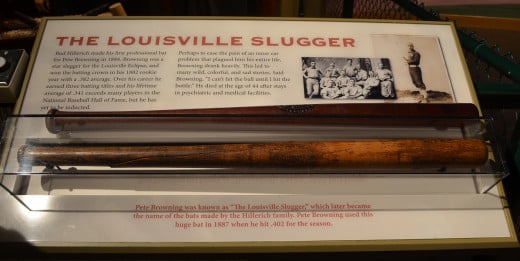
A tour of the factory
Despite the modern machines, the factory still has an old-time feel, with its brick walls and old wooden carts stacked high with either the billets to make the bats, or the finished bats.
Because other bat companies have been known to send in spies dressed as tourists we weren’t allowed to take pictures inside the factory, although there is a display in the museum that shows how the billets are cut from the ash and maple logs. The billets are 36 inches long and three inches thick. Only the ones with the straightest and tightest grains will be used for Major League bats.
We saw how the bats are made, how the nubs that hold the bats in the lathes are sawed off and sanded, how they’re branded and how the black bats are dipped in lacquer. We got to hold various models of Major League model bats, including those of Josh Hamilton, Lance Berkman and Joey Votto.
Surprisingly, the tour costs only $11 and you receive a free mini-bat at the end of it, plus a visit to the museum. That’s more affordable than a movie ticket and a box of popcorn.

Lots of fun stuff in the museum
While the factory tour is guided, you can wander about the museum at your own pace. It’s not a huge area but it contains a lot of displays cases, wax likenesses of Babe Ruth, Derek Jeter, Ken Griffey Jr. and Ted Williams and, dangling from the ceiling, a mobile made of bats (yes, that makes it a bat mobile).
The museum also has other memorabilia on display: A golf bag bearing Thurman Munson’s name (players often received a set of golf clubs when signing a contract with Louisville Slugger); a rose petal from Babe Ruth’s casket; a pitching cage where you can see what a 90-mph fastball looks like (it gets there in a hurry); and a uniform worn by Honus Wagner when he coached for the Pirates after his playing days.
Lots and lots of bats
But the big thing, naturally, is the bats.
The bats on display carry the weight of history. Many were used by historic players and a few were used for historic events. I’m surprised some of them aren’t enshrined in the Baseball Hall of Fame in Cooperstown.
One of those is a bat Joe DiMaggio used the last two weeks of his 56-game hitting streak in 1941. Also on display is the bat Hank Aaron wielded when he blasted his 700th career homer.
The Holy Grail of the museum, set off by itself, is a bat Babe Ruth used during his 60-homer season in 1927. He carved a notch around the Louisville Slugger logo for every homer he hit with it. There are 21 notches.
Other bats on display were used by Ty Cobb, Hugh Duffy, Joe Tinker, Lou Gehrig, Eddie Collins, Home Run Baker, Mel Ott, Stan Musial, Ted Williams, Jackie Robinson, Carl Yastrzemski, Roberto Clemente, Cal Ripken Jr., Tony Gwynn, Mike Schmidt, Eddie Murray, Prince Fielder, Alex Rodriguez, Jim Thome and Craig Biggio, as well as a trio of bats used by Pete Rose, Johnny Bench and Joe Morgan during the Big Red Machine years and a bat used by Shoeless Joe Jackson on barnstorming tours after he was banned from professional baseball.

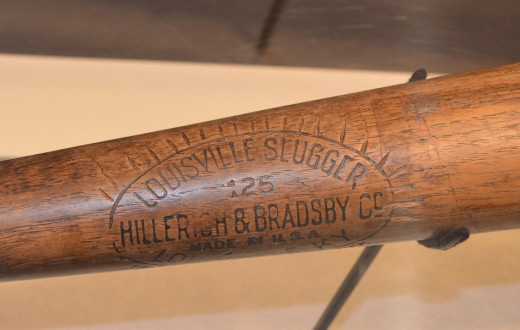
Our treasured Hank Aaron bat
Some of the bats had personal significance for me. As youngsters, my brothers and I owned a Hank Aaron model bat that we loved. Even though it was 35 inches long, it seemed perfectly balanced even for us in our early teens. We clobbered hundreds, possibly thousands, of baseballs with it.
Alas, it finally broke one day, as wooden bats tend to do. We tried valiantly to piece it together with nails and nearly a whole roll of black electrical tape, but it never worked. We then tried to replace it with a Pete Rose and a Joe Morgan model, but neither of them ever felt the same.
When I saw the bat Aaron used to hit his 700th homer, I asked a docent if I could have that one to replace the one we broke. No dice.

Getting a boost from Jackie Robinson
The Jackie Robinson bat also brought back some fond memories. My high school didn’t buy its first shipment of aluminum bats until my freshman year. Since all of us had grown up using wooden bats, we were naturally suspicious of the metal models.
For a time I used a Mickey Mantle model, which disappeared at some point. Then I tried a Nellie Fox model, which nearly made my dad puke because he couldn’t stand him. Finally I settled on the Jackie Robinson model (who was no better than Fox in Dad’s eyes, since he also hated the Dodgers).
I finally got my chance as a starter in my junior year in high school, but it wasn’t until I switched to the Robinson model that I experienced some success, batting about .300 in the final 10 games of the season with it. I planned to use it the next season but my brother managed to break it during batting practice in the spring.
That happened to be the last wooden bat in the team’s possession, so I switched to an aluminum model and wound up batting cleanup, hitting .368 and leading the team in RBIs with 14 (we had a really bad team – I rarely got to hit with a runner in scoring position).
The wall of names
Just outside the museum, in the lobby area by the gift shop, is a wall lined with small wooden plaques bearing the burned-in signatures of every Major League player who signed a contract with Louisville Slugger (listed by the date they signed, which often pre-dates when they first made it to the majors).
From about 1930 until about 1980, the wall is laden with virtually every player who starred in the majors. But as other bat manufacturers gained the attention of the players, the number of names has dwindled.
Louisville Slugger does manufacture bats for many big leaguers who don’t have contracts with the company, such as Brian McCann and Bryce Harper. I don’t know why they didn’t sign other than to keep their options open to use other bats.
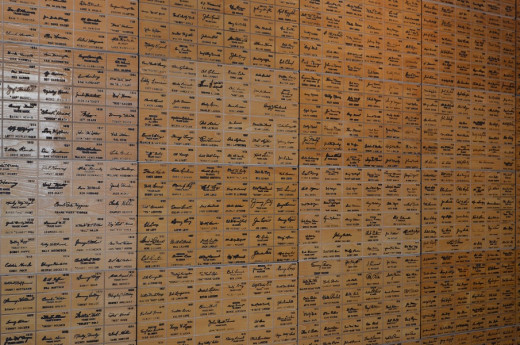
My personal autograph model
One of the highlights of the tour came at the end when I received my very own Gary Kauffman model bat. Since this trip was for my birthday my fiancé bought me a personalized bat. I picked out the model and color I wanted and about 20 minutes later it came back with my name foil-stamped in it.
I slept with my bat that night.


